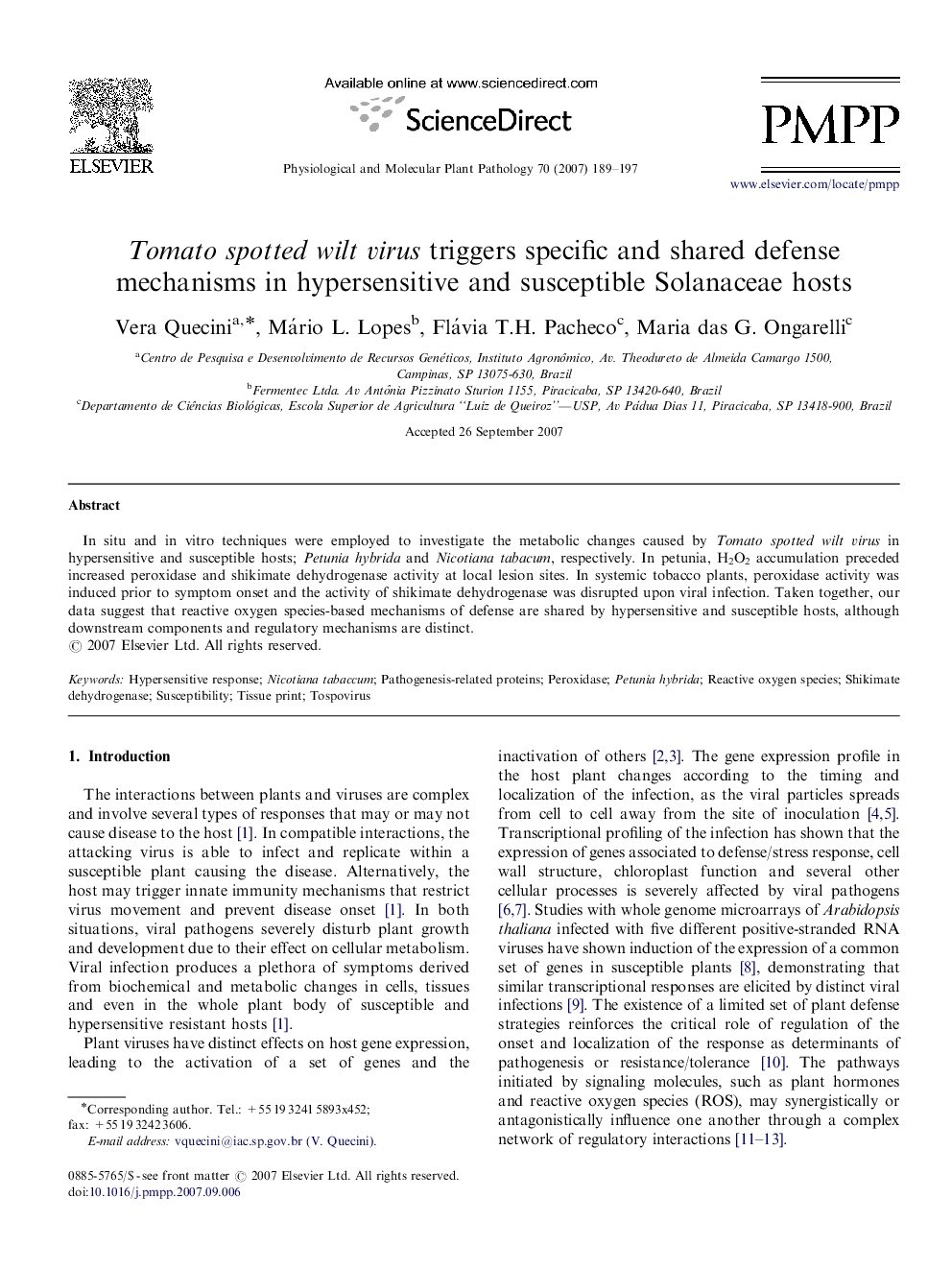| Article ID | Journal | Published Year | Pages | File Type |
|---|---|---|---|---|
| 2836734 | Physiological and Molecular Plant Pathology | 2007 | 9 Pages |
Abstract
In situ and in vitro techniques were employed to investigate the metabolic changes caused by Tomato spotted wilt virus in hypersensitive and susceptible hosts; Petunia hybrida and Nicotiana tabacum, respectively. In petunia, H2O2 accumulation preceded increased peroxidase and shikimate dehydrogenase activity at local lesion sites. In systemic tobacco plants, peroxidase activity was induced prior to symptom onset and the activity of shikimate dehydrogenase was disrupted upon viral infection. Taken together, our data suggest that reactive oxygen species-based mechanisms of defense are shared by hypersensitive and susceptible hosts, although downstream components and regulatory mechanisms are distinct.
Keywords
Related Topics
Life Sciences
Agricultural and Biological Sciences
Plant Science
Authors
Vera Quecini, Mário L. Lopes, Flávia T.H. Pacheco, Maria das G. Ongarelli,
